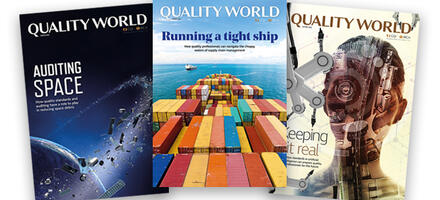
Applying Lean principles in management systems auditing
Progress indicator

Jessen Yeoh, Principal Advisor at Business Improvement Services (Australasia) for Lloyd’s Register, explains how Lean can help auditors reduce waste and achieve a value-added audit experience.
Organisations may fail to enjoy the benefits of implementing ISO management system standards due to inefficiency in their business processes. Companies often over control these processes. Applying Lean principles in management systems auditing can enhance auditors’ ability to identify non-value added activities and opportunities for improvement in the processes. Auditors can apply Lean principles to transform the way the processes work and to ensure that the audit adds maximum value to the process’ owners.
The core principle of Lean is to focus on what provides value to customers, and eliminate activities or process’ steps that are not required by the customers. Thus, an auditor should know the primary customers of the process being audited, and focus on customers’ requirements (both internal and external) and what is valuable to them. After finding out exactly what the customer wants, the auditor can then find ways to eliminate non-value added activities using Lean tools and techniques.
Additionally, increasing pressure on resources is driving a need for greater efficiency in all business’ processes. Applying Lean principles in auditing can help to streamline the processes.
Auditors are encouraged to apply Lean principles in auditing to maximise value and efficiency
Muda, Mura and Muri
Lean focuses on reducing three broad categories of waste, which are Muda, Mura and Muri.
Muda refers to activities that add no value. This can be broken down into the seven wastes of Lean, which are transportation, inventory, motion, waiting, over-production, over-processing and defects. Mura is ‘unevenness’ caused by unlevelled demand, and Muri means ‘over-burden’ or ‘over-stress’ of workers and processes. While conducting an audit, the auditor should specifically identify these three types of waste or inefficiency in business processes and address each of the seven types of Muda. It is especially important to identify wastes and correct process’ errors early when they’re less costly to be rectified.
Auditors should also benchmark process efficiency against Lean ways of working by recognising warning signs of waste or lower added value. Every so often scaling back certain activities in the processes can improve outcomes dramatically. Auditors (especially internal auditors) may collaborate with the process’ owners to identify practical Lean ways of working that can improve added value and reduce waste. In fact, improved Lean ways of working can also positively impact the organisational culture in the long run. Through conducting audit at planned intervals, the auditor is supporting process’ owners to establish a ‘perfect’ process which is without waste, rework or bottlenecks.
Optimising resources
It is important for the auditor to recognise that Lean is not merely about reducing costs, although cost’ reduction is often a ‘by-product’ of Lean ways of working. Lean aims to optimise the use of limited resources to address dynamic business risks. The key to success is applying Lean principles in auditing while meeting ISO 19011 – Guidelines for auditing management systems requirements. The result is a value-add auditing approach that meets the needs of stakeholders on balancing efficiency with quality and value.
In short, auditors are encouraged to apply Lean principles in auditing to maximise value and efficiency, reduce waste and shift the focus of auditing from compliance to performance.
Quality World

Get the latest news, interviews and features on quality in our industry leading magazine.


